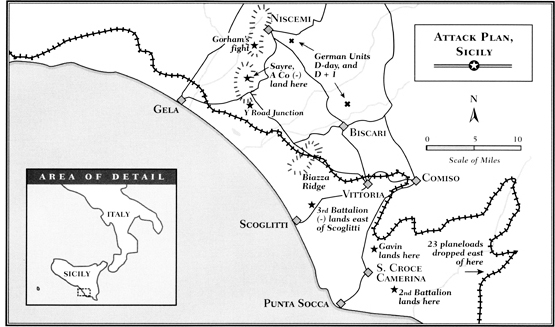Ed Ruggero - Combat Jump: The Young Men Who Led the Assult into Fortress Europe, July 1943
Here you can read online Ed Ruggero - Combat Jump: The Young Men Who Led the Assult into Fortress Europe, July 1943 full text of the book (entire story) in english for free. Download pdf and epub, get meaning, cover and reviews about this ebook. year: 2013, publisher: Argo-Navis, genre: History. Description of the work, (preface) as well as reviews are available. Best literature library LitArk.com created for fans of good reading and offers a wide selection of genres:
Romance novel
Science fiction
Adventure
Detective
Science
History
Home and family
Prose
Art
Politics
Computer
Non-fiction
Religion
Business
Children
Humor
Choose a favorite category and find really read worthwhile books. Enjoy immersion in the world of imagination, feel the emotions of the characters or learn something new for yourself, make an fascinating discovery.

- Book:Combat Jump: The Young Men Who Led the Assult into Fortress Europe, July 1943
- Author:
- Publisher:Argo-Navis
- Genre:
- Year:2013
- Rating:3 / 5
- Favourites:Add to favourites
- Your mark:
Combat Jump: The Young Men Who Led the Assult into Fortress Europe, July 1943: summary, description and annotation
We offer to read an annotation, description, summary or preface (depends on what the author of the book "Combat Jump: The Young Men Who Led the Assult into Fortress Europe, July 1943" wrote himself). If you haven't found the necessary information about the book — write in the comments, we will try to find it.
Combat Jump tells the little-known story of these paratroopers and how they changed the American way of war. It takes readers on their journey from civilians to citizen soldiers, through training in the United States and later in North Africa, and then shows their daring jump into the darkness over enemy-held Sicily.
By first light on D-day, July 10, 1943, it looked as if the mission would fail. Inexperienced pilots, lost or blown off course, dropped 80 percent of the troopers from one to sixty-five miles from their targets. The American commander, James Gavin, landed so far from his objective that he was not even sure he was in Sicily. Arthur Gorham, commanding 500 men of the First Battalion, encountered two surprises when the sun came up. He and just over 100 of his men were the only GIs -- out of 3,400 dropped -- near their objective. He also discovered that the Germans in Sicily had tanks. The lightly armed paratroopers, with their rifles and hand grenades, were not equipped to take on the forty-ton panzers. But against all odds, they did. The costly lessons they learned shaped the war in Europe, for without Sicily, there might have been no airborne invasion of France in June 1944.
Combat Jump recounts the extraordinary contributions these young men made when their country called them to war, and it tells a classic tale of military action and remarkable courage.
Well-written and flowing like a good novel, this book is highly recommended.
Library Journal
A winnerRuggeros thorough resarch, including interviewswith many survivors, and excellent writing earns this book a permanent place in any WWII collection.
Booklist
Ed Ruggero: author's other books
Who wrote Combat Jump: The Young Men Who Led the Assult into Fortress Europe, July 1943? Find out the surname, the name of the author of the book and a list of all author's works by series.









